 2001 Toyota Highlander I Dimensions, Size & Specs
2001 Toyota Highlander I Dimensions, Size & SpecsMeasurements of the 2001 Toyota Highlander I, engineered for optimal performance and comfort
| Dimensions | |
|---|---|
| Length: | 4684-4714 mm184.4-185.6 in15.4-15.5 ft |
| Width: | 1825-1836 mm71.9-72.3 in6.0-6.0 ft |
| Height: | 1689-1745 mm66.5-68.7 in5.5-5.7 ft |
| Ground Clearance: | 175-185 mm6.9-7.3 in0.6-0.6 ft |
| Trunk Capacity: | 297-1090 liter10.5-38.5 cu ft |
| Trunk Capacity (Max): | 2282-3205 liter80.6-113.2 cu ft |
| Weight Specifications | |
| Curb Weight: | 1580-1925 kg3483-4244 lbs |
| Maximal permitted Weight: | 2260-2574 kg4982-5675 lbs |
| Tire Specifications | |
| Rims Size: | 17-inch rims:
|
| Tire Sizes: |
|
The Toyota Highlander I, produced between 2000 and 2007, represents Toyota's entry into the midsize SUV segment with a blend of versatility, reliability, and comfortable family-friendly design. The 2001 Highlander generation features a dynamic size range with a length varying from 4684 mm to 4714 mm (184.4 to 185.7 inches), a width spanning 1825 mm to 1836 mm (71.9 to 72.3 inches), and a height between 1689 mm and 1745 mm (66.5 to 68.7 inches). These dimensions create a spacious yet manageable footprint suitable for urban and suburban driving.
The curb weight of the Highlander I ranges from 1580 kg to 1925 kg (3,483 to 4,244 lbs), reflecting differences due to trims and features. Its maximum gross weight ranges from 2260 kg to 2574 kg (4,984 to 5,677 lbs), indicating its ability to carry passengers and cargo without compromising stability. Ground clearance, an important factor for an SUV, is between 175 mm to 185 mm (6.9 to 7.3 inches), providing sufficient capability for mild off-road conditions and uneven terrains.
The Highlander I offers flexible cargo space, accommodating 297 liters (10.5 cubic feet) of luggage with all seats in place, expanding up to a generous 1090 liters (38.5 cubic feet) with rear seats folded. When fully folded, cargo capacity increases dramatically to between 2282 liters and 3205 liters (80.6 to 113.1 cubic feet), making it highly practical for larger loads and outdoor gear.
Equipped with 17-inch rims (6.5J x 17) and tire options including 225/70 R16 and 225/65 R17, the vehicle ensures a balanced ride quality and road grip. The Highlander I was designed as a reliable and practical midsize SUV, appealing to families and drivers seeking space, comfort, and versatile utility in a well-sized package. This generation helped establish the Highlander as a popular choice in the competitive SUV market.
Discover the standout features that make the 2001 Toyota Highlander I a leader in its class
Have a question? Please check our knowledgebase first.
The Toyota Highlander I from the 2001 model year measures between 4684 mm and 4714 mm in length (roughly 184.4 to 185.6 inches). This size gives the vehicle a substantial presence typical of a mid-size SUV, providing a roomy interior while still keeping it manageable in most urban and suburban settings. The nearly 4.7-meter length facilitates comfortable accommodation for passengers and cargo but may require a bit more attention when parking in tight spaces or navigating narrow city streets. However, it's still compact enough to fit in most standard parking spots.
The Toyota Highlander I features a width ranging from 1825 mm to 1836 mm (approximately 71.9 to 72.3 inches). This width is typical for SUVs in its class and provides ample shoulder and elbow room for passengers in both front and rear seats. From a driving perspective, this width helps maintain stability on highways and improves road presence, though drivers should note the dimensions when driving through narrow lanes or parking spaces. Overall, the width strikes a balance between generous interior space and driving practicality.
The height of the Highlander I ranges between 1689 mm and 1745 mm (about 66.5 to 68.7 inches). This height allows for ample headroom inside, making the cabin comfortable for taller occupants, especially in the front and the middle rows. Additionally, the taller stance gives the Highlander classic SUV characteristics such as commanding driving position and better visibility on the road. The vehicle’s height also aids in providing sufficient ground clearance, which enhances its capability to navigate uneven terrain and light off-road condition.
The Toyota Highlander I offers a ground clearance ranging from 175 mm to 185 mm (approximately 6.9 to 7.3 inches). This ride height supports confident driving over road irregularities, moderate off-road conditions, and obstacles like speed bumps, offering protection to the undercarriage. While it isn't designed as an extreme off-roader, this ground clearance level is ideal for typical urban and suburban use, as well as light trail adventures. It helps improve the vehicle’s capability without compromising on-road comfort or stability.
Considering the Highlander I’s dimensions—length of about 4684 to 4714 mm (184.4 to 185.6 inches), width of 1825 to 1836 mm (71.9 to 72.3 inches), and height of 1689 to 1745 mm (66.5 to 68.7 inches)—it generally fits comfortably within a standard residential garage. Typical residential garages are about 6 meters (19.7 feet) deep, 3 meters (9.8 feet) wide, and 2.1 to 2.4 meters (6.9 to 7.9 feet) high. Thus, the Highlander I’s size is well accommodated in garages designed for mid-size SUVs, leaving enough space for opening doors and some movement around the vehicle.
The Toyota Highlander I’s curb weight ranges between 1580 kg and 1925 kg (approximately 3483 to 4243 pounds), while its maximum weight varies between 2260 kg and 2574 kg (4980 to 5676 pounds). The curb weight includes the vehicle's weight with standard equipment and fluids, and the maximum weight reflects the full load capacity, including passengers and cargo. These weight metrics affect handling, braking, ride comfort, and fuel consumption. Heavier models generally offer a solid feel on road but may consume more fuel, whereas lighter variants provide better fuel efficiency but with potentially less stability. Overall, the Highlander I strikes a balance typical of mid-size SUVs.
The Highlander I offers impressive versatility with luggage space ranging from 297 to 1090 liters (roughly 10.5 to 38.5 cubic feet) when the rear seats are upright. Folding down the rear seats expands this capacity dramatically to between 2282 and 3205 liters (about 80.5 to 113 cubic feet). This configuration allows for flexible cargo arrangements, making it suitable for both daily errands and larger cargo needs like moving bulky items or going on extended trips. These figures make the Highlander I competitive in its segment, providing practical utility for families and adventure seekers alike.
The 2001 Toyota Highlander I was the first generation of the Highlander, meaning it did not have a direct predecessor within the Highlander lineup itself. However, it can be compared to vehicles in Toyota’s SUV lineup that preceded it, such as the Toyota RAV4 or larger Toyota 4Runner models. The Highlander I stood out by occupying a mid-size segment that balanced car-like comfort and space with SUV utility. It featured a more spacious interior and increased cargo capacity compared to the smaller RAV4 while being more maneuverable and fuel-efficient than heavier, body-on-frame SUVs like the 4Runner. Its size and features helped establish it as a versatile and family-friendly SUV option.
When compared to its mid-size SUV peers from the early 2000s, such as the Honda Pilot, Ford Explorer, and Nissan Murano, the Toyota Highlander I offered competitive dimensions and interior space. Its length (4684-4714 mm) and width (1825-1836 mm) were on par with or slightly more compact than some competitors, which helped in urban maneuverability. The Highlander emphasized a balance between comfort, drivability, and cargo space, which appealed to families seeking a versatile daily driver with light off-road capabilities. Unlike some rivals, it often featured a more refined interior and reliable drivetrain options, contributing to its strong reputation for durability and practicality.
The 2001 Toyota Highlander I comes equipped with rims sized 6.5J x 17 inches and tire options of 225/70 R16 or 225/65 R17. These tire sizes contribute to a good balance of ride comfort and handling characteristics. The taller tires (225/70 R16) offer a slightly softer ride due to increased sidewall height, which helps absorb bumps and uneven road surfaces, while the lower profile 225/65 R17 tires offer a firmer ride with potentially better handling dynamics on paved roads. Overall, the chosen tire and wheel specs help the Highlander maintain composure over varied terrain and provide a stable and comfortable driving experience.
Discover similar sized cars.
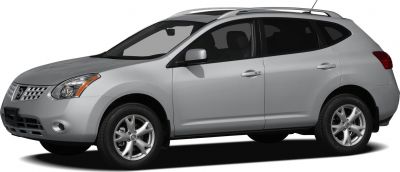
| Production: | 2007-2011 |
|---|---|
| Model Year: | 2008 |
| Length: | 4646 mm182.9 in |
| Width: | 1801 mm70.9 in |
| Height: | 1659 mm65.3 in |

| Production: | 2022-present |
|---|---|
| Model Year: | 2022 |
| Length: | 4680 mm184.3 in |
| Width: | 2065 mm81.3 in |
| Height: | 1725 mm67.9 in |
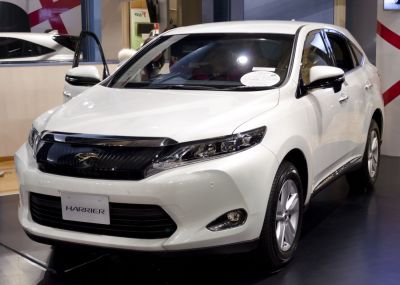
| Production: | 2013-2017 |
|---|---|
| Model Year: | 2014 |
| Length: | 4720 mm185.8 in |
| Width: | 1835 mm72.2 in |
| Height: | 1690 mm66.5 in |
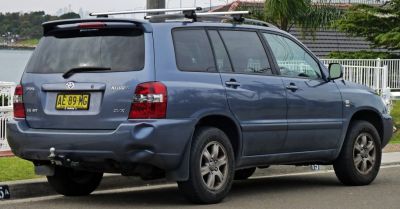
| Production: | 2000-2007 |
|---|---|
| Model Year: | 2001 |
| Length: | 4685 mm184.4 in |
| Width: | 1825 mm71.9 in |
| Height: | 1720 mm67.7 in |
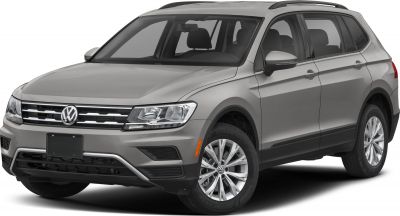
| Production: | 2016-2021 |
|---|---|
| Model Year: | 2016 |
| Length: | 4702 mm185.1 in |
| Width: | 2099 mm82.6 in |
| Height: | 1674-1685 mm65.9-66.3 in |
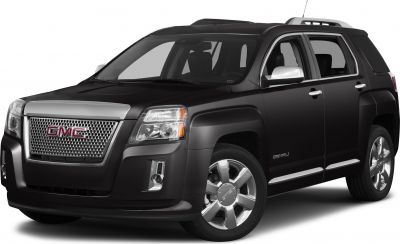
| Production: | 2010-2015 |
|---|---|
| Model Year: | 2010 |
| Length: | 4707 mm185.3 in |
| Width: | 1849 mm72.8 in |
| Height: | 1684 mm66.3 in |

| Production: | 2019-2023 |
|---|---|
| Model Year: | 2019 |
| Length: | 4673 mm184.0 in |
| Width: | 2063 mm81.2 in |
| Height: | 1667 mm65.6 in |

| Production: | 2016-present |
|---|---|
| Model Year: | 2016 |
| Length: | 4675 mm184.1 in |
| Width: | 1845 mm72.6 in |
| Height: | 1710 mm67.3 in |
